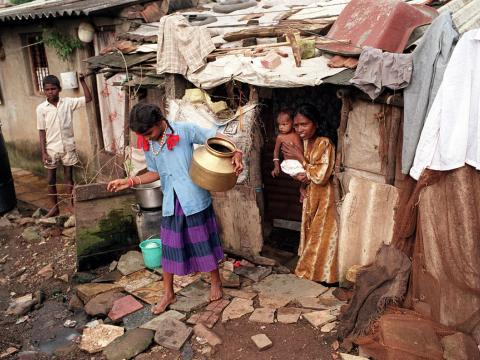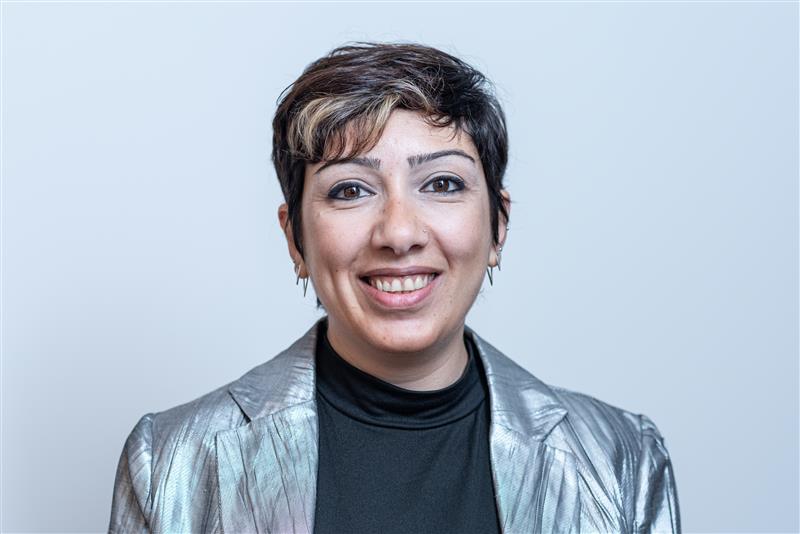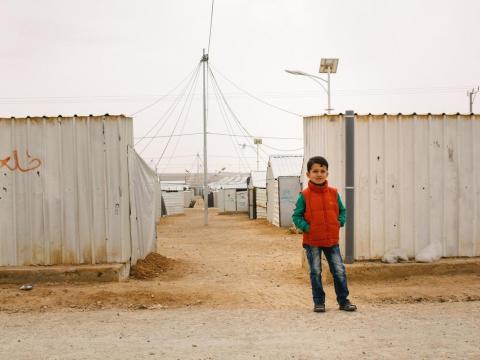
Left out & Unaccounted for: How COVID-19 is exposing inequalities in cities
By Aline Rahbany, Technical Director, Urban Programming, World Vision
“It is getting tough to get ration. We get things only from 7 am to 11 am. Many daily wage earners are finding it difficult to get food for their family. Another challenge is accessing the public toilets. Earlier we could go at least three to four times in a day, but now we go just once to the toilet. When we go there it is very crowded and there is always a police van nearby. If people are not wearing masks, then they get whacked by them. There are a few people who just make excuses to use the loo but just roam around, so that is irritating.”
Such is the situation in Dharavi, Mumbai, considered one of the largest Asian slums, as described by 14-year-old Shivmangal during a Zoom interview with World Vision India.
These challenges are not unique to India’s poorest urban neighborhoods. Globally, more than 1 billion people, including 300 million children, live in city slums and informal settlements.* This number is expected to rise to 3 billion by 2050, making up almost half of the projected global urban population (6.5 billion). But how accurate are these numbers when basic population data about urban slum dwellers is practically non-existent? What do we really know about the health needs of the urban poor, their livelihoods situation and their level of education – pre-pandemic – when most of them are excluded from local, city and national government plans and budgets and depend on informal economies and informal service provision?
Residents of city slums and informal settlements are not counted, and therefore unaccounted for, by local and national policymakers and duty bearers. This should make us think twice about the success of the measures we are putting in place to prevent, respond to and recover from the direct and indirect impacts of the pandemic. How can we measure success without baseline data?
In the past few months, urban experts and thought leaders have published articles and blogs reflecting on the characteristics and issues that make urban slums and informal settlements hotspots for the spread of COVID-19. Many highlight the lack of space, the overcrowded and inadequate housing arrangements sheltering multiple families in one household, the lack of access to essential services like water and electricity, the shared facilities, and the meagre urban infrastructure that make it nearly impossible for the urban poor to practice prevention measures or isolation.
This pandemic is shedding light on the inequalities, inequities and structural and systemic poverty in cities. But is that enough? Has this increased awareness led to actions to address these critical issues? What is the international community doing with this information to maintain and protect current development funding to alleviate urban poverty while also responding to the additional immediate needs caused by COVID-19? How are they engaging and advocating with city and national governments to discourage one-size-fits-all approaches in urban contexts and support more tailored approaches developed with local actors to address these unique challenges and needs?
As an international NGO, World Vision is advocating with governments for sustained access to conflict areas and with donors to maintain critical humanitarian funding for support to refugee and internally displaced populations during the ongoing COVID-19 health response. Yet, over half of the world’s refugee population now lives in cities. Refugees, internally displaced persons (IDPs) and migrants are increasingly choosing to live “freely” and in dignity in cities rather than confined to camps and excluded from economic and social life in their host countries. Often, refugee, IDP and migrant groups end up settling in city slums and informal settlements due to the high cost of housing, among other factors. In urban areas, they too go uncounted and unaccounted for by local and national governments.
The diverse populations sharing the urban space have distinct needs, they can (or cannot) access different opportunities in cities and are impacted differently by government policies, including measures to reduce the spread of the pandemic. To date, organisations working in urban developing and fragile contexts have shared little information about promising inclusive response practices by local governments, especially in cities hosting refugees, IDPs and migrants, and where urban slums and informal settlements exist. In fact, some are starting to raise legitimate concerns regarding the future of the urban poor in cities where slums and informal settlements are perceived as hubs for disease and “illegal” activity. As restrictions on movement and other prevention measures start to ease, evictions of informal settlements and informal housing could return as a way of getting rid of these “problematic” hotspots in cities.
Now more than ever, the international community must amplify its voice in calling for accelerated actions to alleviate poverty and inequality in urban areas, making cities “inclusive, safe, resilient and sustainable” (SDG 11). At World Vision, we are responding to COVID-19 in over 253 cities across all regions in both stable and fragile contexts. Our prepositioning at the local level with urban residents and key partners, through existing urban development or humanitarian programmes in places affected by conflicts or dealing with the impacts of climate change has allowed for an agile response to the pandemic. Our connections with trusted local church and other faith leaders, grassroots organisations and neighborhood volunteers are helping us to identify and target the most vulnerable households with support to meet their basic needs and exercise preventative measures to limit the spread of the disease. But more needs to be done.
COVID-19 is currently a trending global challenge, but for urban hotspots, it is one of many. Responding to COVID-19 alone will not help the urban poor graduate to better living conditions, nor will it help in creating inclusive and sustainable cities. Responding agencies should make intentional efforts to connect COVID-19 response work in cities to the local and national governments’ and other organisations’ existing development and humanitarian response plans. Donors should make a greater effort to support local and national plans. As we enter the last decade of action to achieve Agenda 2030, I reflect back on the words of former UN Secretary General Ban Ki-Moon that can't ring more true today: “Our struggle for global sustainability will be won or lost in cities”. The current COVID-19 response is an opportunity for members of the international community to take direct collective actions to ensure we are continuing to build and contribute to cities where no one is left behind.
* UN-HABITAT, the UN agency whose prime focus is managing urbanization and human settlements defines a slum household as “a group of individuals living under the same roof in an urban area who lack one or more of the following:
1. Durable housing of a permanent nature that protects against extreme climate conditions.
2. Sufficient living space which means not more than three people sharing the same room.
3. Easy access to safe water in sufficient amounts at an affordable price.
4. Access to adequate sanitation in the form of a private or public toilet shared by a reasonable number of people.
5. Security of tenure that prevents forced evictions.”
Source: UN-Habitat (2003), The Challenge of Slums; UN-Habitat (2013), The State of the World Cities Report 2012/13.

